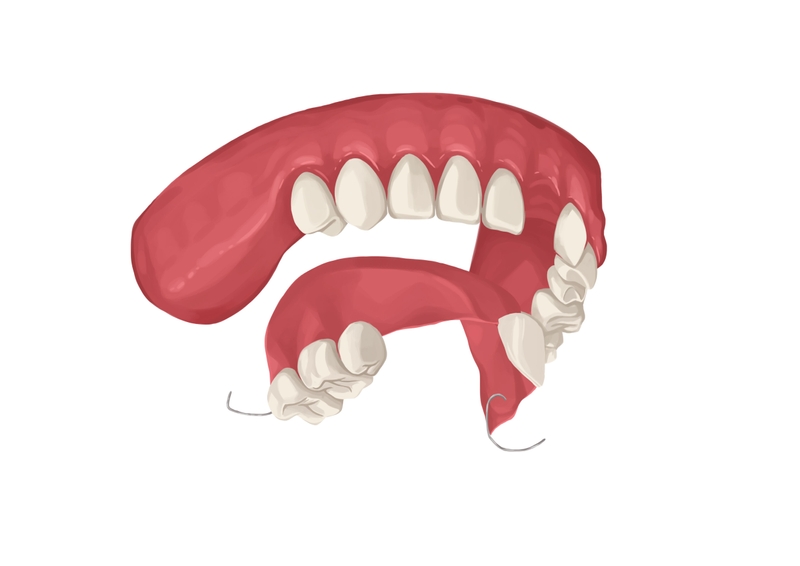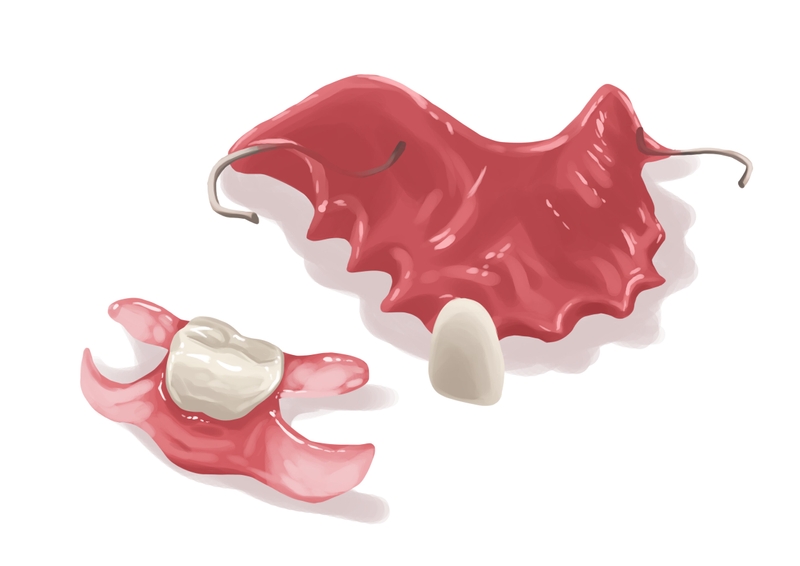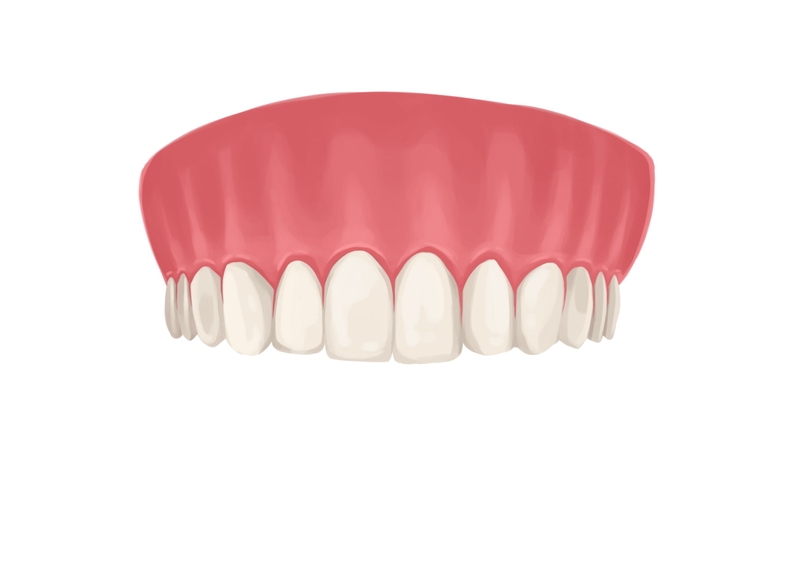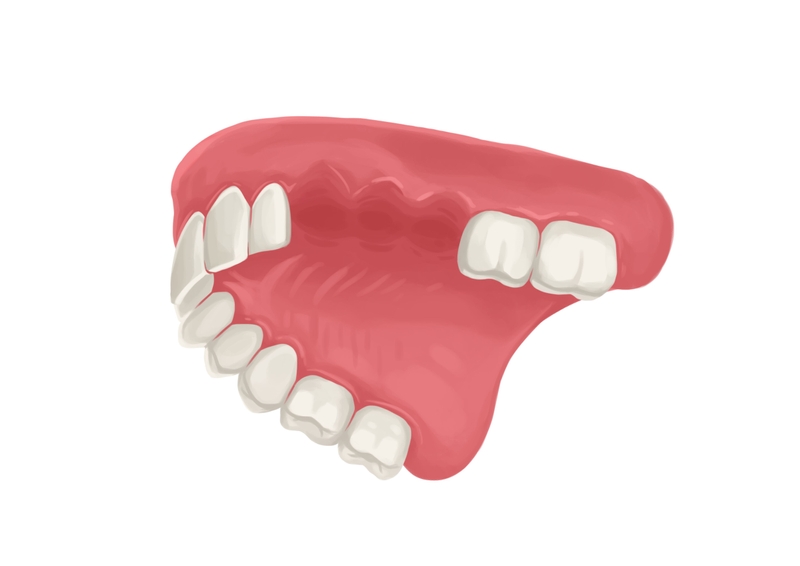- A dental bridge can replace one or two adjacent missing teeth, but requires modification of the healthy abutment teeth.
- Dentures can replace an entire arch of teeth. They are more affordable, but can be bulky and uncomfortable.
- Resigning from dental solutions can lead to deterioration of eating and speaking abilities. It can also make other teeth shift into the space.
Turn your smile into a masterpiece. Use Authority Dental to find and book dental implant providers nearby.
What tooth replacement options other than dental implants can you use? Here's everything you need to know.
"When patients cannot get a dental implant, the conversation immediately turns to the two classic alternatives: a fixed bridge or a removable partial denture," Harry Lee, DMD, explains.
"However, in my practice, the first thing I must address is the 'third option' they often consider: doing nothing. Leaving a space, especially a back molar, is a high-risk choice. I often explain it is like pulling one book from a tightly packed bookshelf—the neighbors will lean in, and the tooth above the gap will start to drift down, creating a cascade of bite problems," he emphasizes.
Dental bridge

Picture by Authority Dental under CC 2.0 license
A bridge is the best alternative to dental implants. If you are missing one tooth or even two that are next to each other, a bridge is a great option. They work by connecting a pontic (a fake tooth) to a crown (an abutment) on either side.
To place a bridge, the abutments will need to be modified as they would for a crown. This means a large portion of the tooth structure will be removed, leaving the tooth resembling a tree stump. The final restoration will be three crowns, or more if you are replacing more than one tooth.
While bridges are effective treatment options, they have a couple of adverse effects. First, if the abutment teeth are otherwise healthy, removing tooth structure weakens their integrity. Second, the bone under the missing tooth will begin to resorb, which may cause bone loss in the adjacent teeth as well. A bridge will likely lead to more treatment in the future.
A three-unit bridge will cost $2500-$4000.
Fixed in place, no need to remove daily
Comfortable to wear
Speak and chew like normal
Can only replace adjacent missing teeth
Can be difficult to clean under
May need to change the structure of supporting teeth
Does not stabilize the underlying bone
May need several bridges to replace multiple missing teeth
Dentures

Picture by Authority Dental under CC 2.0 license
Dentures are another alternative to dental implants and are a good option to replace many missing teeth or even an entire arch. You can have either a complete or partial denture.
Partial denture
A partial denture can replace one or more missing teeth in an arch. There are clasps on the partial that hook around existing teeth to help stabilize the partial and keep it in place when eating and speaking.
All partials are removable, so you will need to clean them each day and take them out at night to allow the tissues to breathe. A “fixed” partial denture refers to a bridge.
Complete denture
A complete denture replaces all the teeth in one arch. They do not have clasps like partial dentures, so they are retained by other means. An upper denture is held in place by the suction that occurs between the palate (roof of the mouth) and the denture itself. A bottom denture is held in place by gravity and any remaining bone ridge. You can apply a denture adhesive to both upper and lower dentures to help them stay in place.
Like partials, you will need to clean your dentures daily and remove them while you sleep.
Fixed dentures are an option for those who would like implants placed under the denture. These implants connect to the denture, effectively fixing it into place.
Denture costs can range from $ 1,000 to $30,000, depending on the type of denture.
More affordable than bridges
Can restore multiple missing teeth at once
Can be bulky and uncomfortable
Must remove daily
May need to replace as the bone resorbs

Tooth flipper

Picture by Authority Dental under CC 2.0 license
A flipper is meant to be a temporary solution to replace one or more missing teeth. It is also referred to as a temporary partial denture. It works much the same as a partial denture, but is much less durable. The materials used to make a flipper are not intended for long-term use.
Flippers range in price from $200 to $500.
Very affordable
Quick to fabricate
Must take in and out to clean
May not look as natural
Will need to replace eventually
Not durable
Saving existing dentition

Picture by Authority Dental under CC 2.0 license
If you have the option to save a natural tooth, that is nearly always the best option. While dentistry has made great strides in technology, there is no substitute for your natural tooth.
If you have a severely compromised tooth, your dentist will discuss its prognosis. While some teeth can be saved, a poor prognosis may not warrant investing money.
Nothing is better than your natural tooth
May need additional treatment later
Can be costly to restore several teeth
Doing nothing

Picture by Authority Dental under CC 2.0 license
In some cases, you might not have to replace a missing tooth. However, there are consequences of this choice.
The most obvious consequences are the decline in eating and speaking capabilities. The level of impairment will depend on which tooth you are missing. Anteriors and premolars are most noticeable when smiling.
Many people assume that if they have lost just one molar, they do not need to replace it. They may be functioning fine, and no one will notice. However, you will eventually have supraeruption of the opposing tooth.
Supraeruption happens when there is no tooth to bite against. The tooth above will start to erupt further into the mouth. In some cases, this can result in a total loss of that tooth and create a dental emergency.
Other teeth will also begin to shift into the space. While this may not cause a problem initially, it may limit replacement options in the future.
Requires no financial commitment
Chewing function will be limited
May impact your speech
Bone may resorb too much for future treatment
FAQ
What is the most durable alternative to dental implants?
The most durable alternative to a dental implant is a dental bridge. As long as the teeth the bridge cements onto are stable and adequately cared for, a dental bridge can last many years.
What is the cheapest alternative to dental implants?
Other than no treatment, the cheapest alternative to dental implants is a flipper. However, a flipper cannot replace more than one or two teeth. If several teeth need to be replaced, the cheapest alternative to dental implants is a partial denture.
What are the advantages of the implant over alternative solutions?
Implants have several advantages over alternative solutions.
A dental implant is the closest thing to a natural tooth that we can place. They do not put unnecessary pressure on other teeth like partials do, and they help maintain the bone in the area of the missing tooth. No other replacement options stabilize the bone.
Harry Lee, DMD
If a patient wants a permanent, "non-removable" solution, we talk about a dental bridge. This is like building a three-unit roadway across the gap, supported by the two healthy teeth on either side. It feels powerful and natural. The downside, which I am always very open about, is that we must permanently and aggressively shave down those two "pillar" teeth to place crowns on them. We are sacrificing healthy tooth structure to fill the gap, a decision that can never be undone.